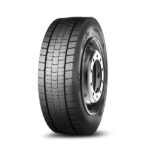Emily Newton is the Editor-in-Chief of Revolutionized, an online magazine exploring innovations in the industrial sector.
In the words of Ned Stark from “Game of Thrones,” “winter is coming.” No matter what part of the country a trucking fleet calls home, there will always be situations where driving through snowy conditions is unavoidable. That’s why it’s essential to prepare the fleet before temperatures start to drop. Here’s what must be done to ensure vehicles are ready for harsh winter weather.
Head in for a Tuneup
The oil, grease and other fluids that function sufficiently in summer won’t work properly once the temperature drops. Before that first freeze hits, each truck needs to make its way into the shop for a winterizing tuneup. This includes:
- Oil changes and switching to a higher viscosity product designed for cold weather
- Coolant with a blend appropriate for lower temperatures
- Brake fluid air dryers
- New belts or hoses if they’re showing signs of wear
It’s vital to ensure everything is ready once the weather starts to get cold. Changing the oil on a frozen engine is possible, but it’s a lot more difficult than it needs to be. It’s best to avoid this at all costs.
Inspect and Replace Vehicle Battery
Batteries are essential for starting the vehicle and providing driver comfort. They are vulnerable to extreme temperatures — especially cold. The colder it is, the less power batteries have to work with. According to AAA, at 32 F, a vehicle battery can lose as much as 35% of its starting power. That number climbs to 65% at 0 F, making it difficult or even impossible to get the truck started.
Check the data on the battery and ensure it hasn’t exceeded its recommended life span. Running one until it dies completely might seem more cost-effective until the truck ends up stranded somewhere and fleet managers are scrambling to call roadside assistance.
Replace Filters as Necessary
Air and fuel filters and fuel/water separators should be included in a standard truck maintenance plan before the winter driving season begins. These items are usually addressed during regular maintenance but should be inspected again before temperatures start to fall.
Fuel filters are particularly important because diesel fuel can be so problematic during cold weather. It contains paraffin, which can cause the fuel to gel in cold weather. A tank of incorrectly rated fuel might not cause a problem, but perpetually refilling with the wrong gasoline for cold-weather conditions can easily clog the filter.
Treat Rust and Apply Inhibitors
Rust is probably one of the biggest challenges when it comes to winter driving. In addition to near-constant water exposure due to snow and ice being kicked up by the tires, truck undercarriages are frequently exposed to road salt and other deicing chemicals. These are valuable for preventing snow and ice buildup that could cause accidents, but they also accelerate rusting on exposed metal.
Before cities start salting their roads, each truck needs a thorough undercarriage inspection. Any existing rust should be sanded off and repaired — or panels replaced if there’s significant damage. Once the repairs are complete, applying a rust inhibitor can prevent further problems from developing. Frequent undercarriage washing can also help reduce the impact of road salt on fleet vehicles.
Employ Experienced Drivers
Driving a loaded tractor-trailer down a straight stretch of dry highway is a lot different than motoring when the road is icy and the embankments are piled high with snow. Winter driving is dangerous at the best of times, and it becomes more so when inexperienced operators are behind the wheel.
This is often challenging, with driver shortages looming and companies struggling to recruit new employees and keep existing ones on the payroll. Don’t rush new hires out onto icy roads, especially if they haven’t had any experience driving in those conditions. It’s best to err on the side of caution.
Choose Correct Fuel Ratings
It was previously mentioned that the paraffin in diesel fuel can become waxy when the temperature drops. This can cause clogs that can be difficult to repair. Fueling stations usually switch the diesel they provide to one with a higher cetane rating and anti-gelling additives designed to prevent this problem before winter arrives.
Drivers should carefully look for fueling stations that offer winter-rated fuel. Most will automatically make the switch once the weather starts to cool. However, drivers should be aware if they’re in warmer climates where the higher-rated fuels aren’t always strictly necessary.
Stay Safe This Winter
Driving during the cold winter months is necessary, but there are certain steps to take to ensure the safety of everyone on the road. Frigid temperatures, snowy conditions and salted roads are all rough on cars and drivers. Being prepared won’t prevent every problem, but it can help to reduce their impact and prevent them from causing too much costly downtime.








